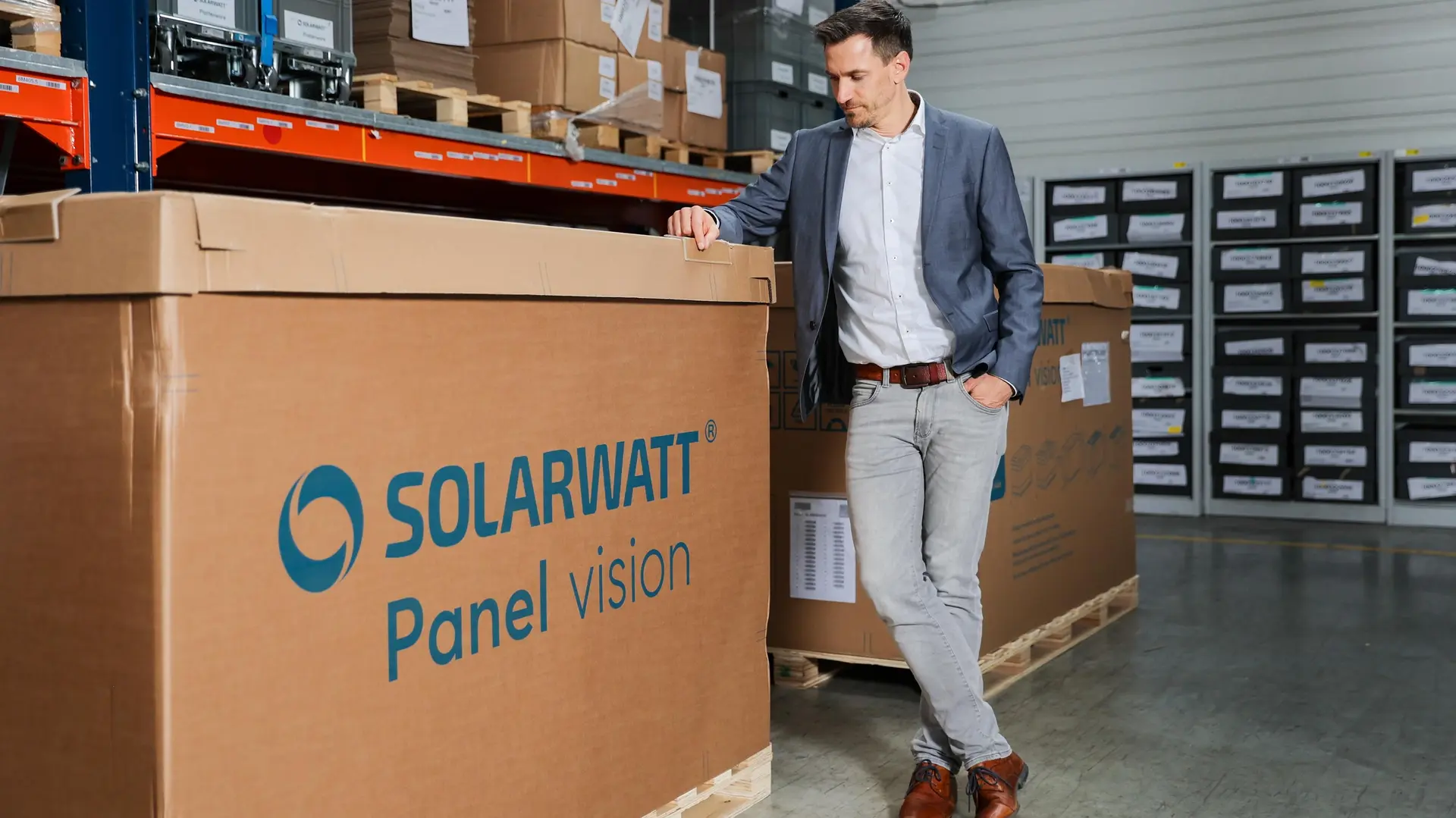SOLARWATT reduces the CO₂ footprint of TOPCon modules again

SOLARWATT has been offering a new generation of solar modules for just over a year now. The TOPCon modules of the "vision" series not only boast an output of up to 455 watts peak (229 Wp/m²) but also have a significantly lower CO2 footprint than conventional solar modules. The Europe-wide company has now succeeded in significantly reducing emissions per module again – from 205 to 193 kg CO2 equivalents. The average emission value per solar module for other manufacturers is typically more than 600 kg CO2 equivalents.
"We are very proud to offer even greener solar modules – and with a value of 193 currently unavoidable CO2 equivalents, we can demonstrate how sustainable solar module production can be. However, this isn't a coincidence; rather, a lot of hard work and our more than 30 years of experience in module production go into this process," explains Gregor Kuschmann, Product Manager Panels at Solarwatt.
The CO2 footprint is calculated according to the PPE2 standard and considers all emissions generated during the production and processing of all components of Solarwatt modules – with the exception of the aluminium frame. Transport from the factory to the Solarwatt logistics centre near Dresden generates an additional 4 kg of CO2 per module. The improved CO2 footprint of Solarwatt modules is now due to a higher proportion of renewable electricity used in module production.
The glass-glass modules of the "vision" series with TOPCon cells are available as bifacial half-cell modules in the style (from 450 Wp) and pure (from 455 Wp) versions and feature a robust 35 mm aluminium frame, ensuring maximum stability. The product warranty for the durable double-glass modules is 30 years. Furthermore, Solarwatt guarantees a module output of at least 90 percent after 30 years: "With this, we are also setting a new standard in the field of TOPCon modules," says Gregor Kuschmann.

Your press contact
Paula Harris
Marketing and Communications Manager UK & Ireland


